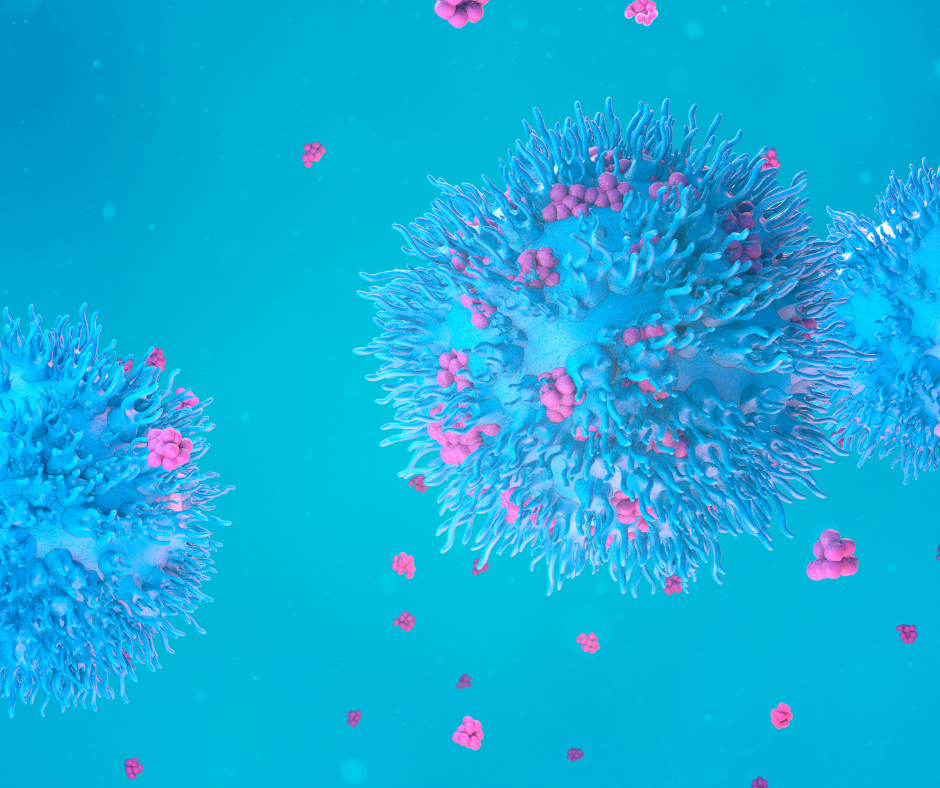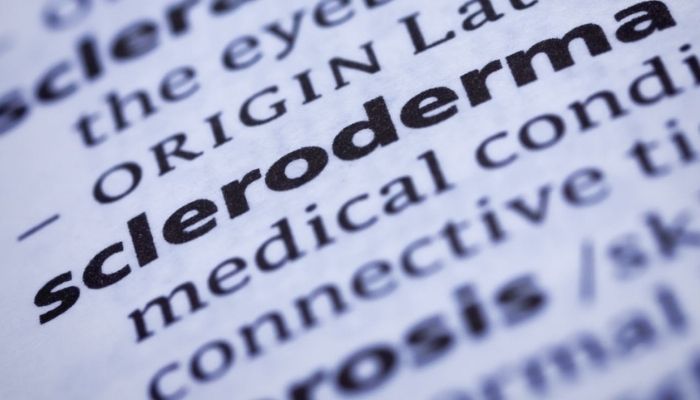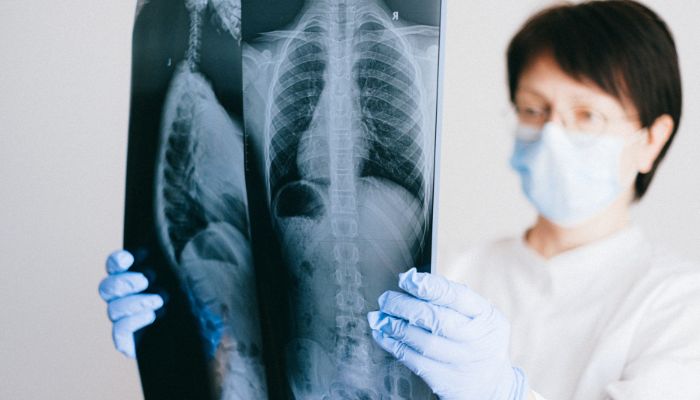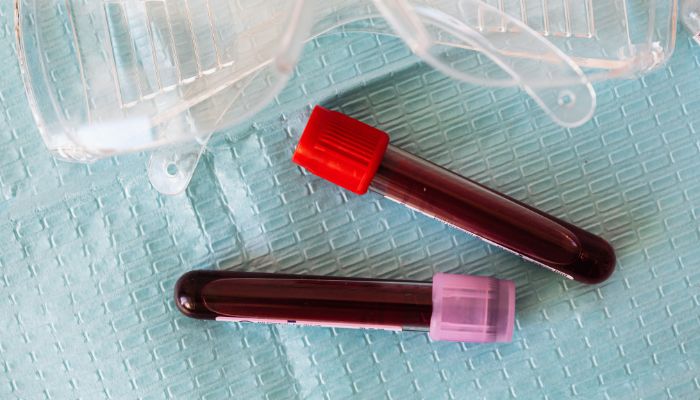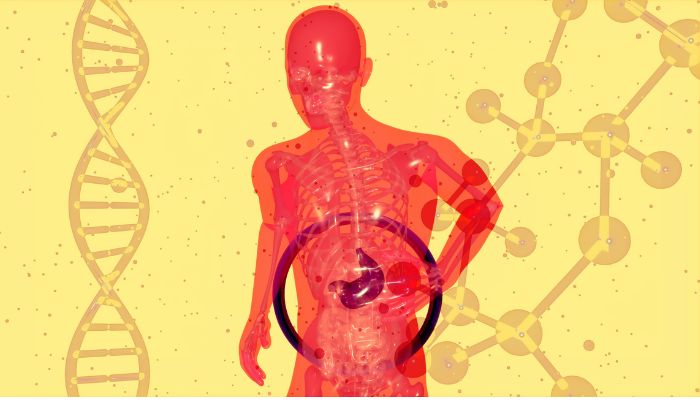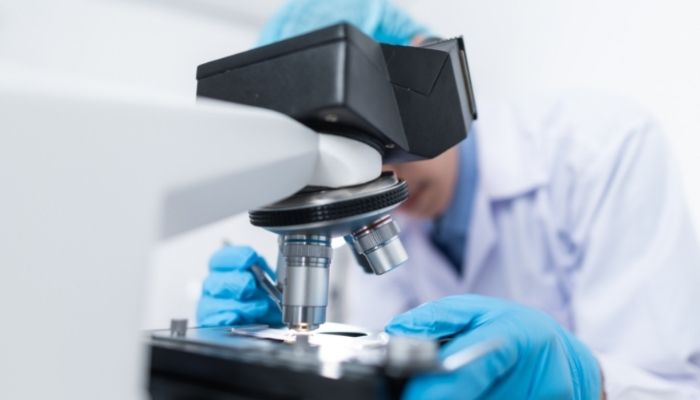|
Calcitonin and SOST levels may point to PAH and ILD, small study find by Marisa Wexler, MS | April 9, 2024 Levels of two blood proteins, calcitonin and SOST, may be markers of lung disease in people with scleroderma, a new study shows.
“This study indicates that serum calcitonin and SOST levels are promising biomarkers for [scleroderma]-related PAH [pulmonary arterial hypertension] and ILD [interstitial lung disease], respectively,” the researchers wrote, though they noted that “further research is needed to verify these results and understand the underlying mechanisms.” The study, “Protein profiling in systemic sclerosis patients with different pulmonary complications using proteomic antibody microarray,” was published in Arthritis Research & Therapy. Scleroderma, also called systemic sclerosis or SSc, is marked by abnormal scarring that usually affects skin and can also affect various other organs throughout the body. When the disorder involves the lungs, SSc can lead to complications like interstitial lung disease (ILD, marked by lung scarring) and pulmonary arterial hypertension — PAH, defined by high pressure in the blood vessels that carry blood to and through the lungs. These lung issues are leading causes of mortality in SSc, and early detection is key to facilitate optimal treatment. In my debut column, I share the hurdles I face in my life as a warrior by Sherlene Perkins | February 19, 2024 Yes, I’m a warrior. I was classified as one long before my scleroderma diagnosis since I’m an African American woman and single mom of two adult children. God has been preparing me to be a great warrior since birth.
Learning that I had scleroderma was a relief. The symptoms started July 2019 after six months of excruciating pain and an inability to use my hands. Amid the diagnosis and symptoms, I found solace in thinking sardonically, “OK. Now what?” The shock was that the doctors told me there is no cure. They prescribed prednisone to help with inflammation and methotrexate to suppress my immune system. Disbelief about my bad luck filled me. Now what? For those of you new to our website and wanting to know a little more about Scleroderma, we hope this article gives you what you are looking for. If you want to ask questions from others on the same path, please don't hesitate to reach out via our FB pages. Scleroderma is a chronic disease that affects the skin and connective tissue, the tissue that supports and holds organs together, and is also found in the joints.
The hallmark of scleroderma is thick and hardened skin caused by excessive production of collagen, a protein that is the main component of scar tissue. This scar tissue can accumulate in and damage organs, including the heart and blood vessels, and the lungs, stomach, and kidneys. Females are about four times more likely to develop scleroderma than males. Disease onset typically occurs between ages 35 and 50, though people of all ages can be affected. Causes Scleroderma is an autoimmune disease, meaning it is caused by an overactive immune system that mistakenly attacks the body’s own tissues. The resulting excessive inflammation damages the skin and affected organs. It is a complex condition, and the underlying disease process is not well understood. It is thought that the disease results from a combination of genetic and environmental factors. Scleroderma is not contagious, infectious, or cancerous. Symptoms Symptoms of scleroderma vary among patients, and can range from very mild to life-threatening depending on which parts of the body are affected and the extent of organ involvement. A mild case can become serious if not treated properly. Characteristic symptoms, besides patches of thick and hardened skin, include contractures when skin stiffens over joints, skin ulcers (sores), calcinosis — when lumps of calcium form under the skin — and Raynaud’s phenomenon, in which the fingers and toes feel numb, prickly, or frigid in response to cold temperatures or emotional distress. Manifestations affecting internal organs include damage to muscle and bone tissue, shortness of breath, an abnormal heart rhythm, a burning sensation in the chest (heartburn), difficulty swallowing, blurred vision. A scleroderma renal crisis is possible in some systemic scleroderma (mentioned below) patients. This renal, or kidney, crisis is a serious disorder characterized by a sudden onset of high blood pressure, progressive kidney failure, hypertensive encephalopathy (brain dysfunction or damage due to high blood pressure), and/or microangiopathic hemolytic anemia, or anemia due to the red blood cells being sheared (ripped apart) as they pass through small blood vessels. Raynaud's phenomenon is a common systemic sclerosis symptom by Steve Bryson, PhD Elevated activity of a blood-clotting protein called Factor XIII (FXIII) in the bloodstream of adults with systemic sclerosis (SSc) is tied to the presence of Raynaud’s phenomenon, a common SSc symptom, a small study suggests.
While most study participants had FXIII activity levels within the normal range, “patients with higher FXIII activity are more likely to have circulatory disorders in their hands,” the researchers noted. The study, “Factor XIII and Endothelial Dysfunction in Patients with Systemic Sclerosis,” was published in the journal Hämostaseologie. Study targets correlations among SSc patients with different types of lung disease by Andrea Lobo, PhD The degree of skin tightening is associated with changed levels of proteins implicated in inflammation and cell death among systemic sclerosis (SSc) patients with pulmonary involvement, a study in India reports.
The study established protein correlations among SSc patients with different types of lung disease, which might contribute to identifying lung involvement in people with newly diagnosed SSc, the team suggested. “A longitudinal follow up in these patients with assessment of these immunological parameters may be helpful in monitoring the disease,” the researchers wrote. The study, “A comparative study of modulatory interaction between cytokines and apoptotic proteins among Scleroderma patients with and without pulmonary involvement,” was published in the journal Cytokine. SSc is characterized by abnormal scarring of the skin and potentially internal organs, such as the heart, kidney, lungs, and digestive tract. The disease is thought to develop from the combination of immune dysfunction — meaning the activation and recruitment of immune cells and the production of self-targeting antibodies (fibrosis) — and damage to small blood vessels. The most prominent forms of lung involvement in SSc are interstitial lung disease (ILD), a group of conditions characterized by lung inflammation and fibrosis, and pulmonary arterial hypertension (PAH), caused by the narrowing of small blood vessels that transport blood to the lungs. Studies have reported the involvement of proinflammatory and pro-fibrotic signaling molecules called cytokines in SSc. Also implicated in the disease are proteins associated with apoptosis — programmed cell death (as opposed to cell death caused by injury), which can alter immune responses. To investigate the possible correlation between blood cytokines and apoptotic proteins in SSc, researchers in India analyzed 100 treatment-naïve SSc patients, with or without pulmonary involvement, as well as 100 healthy people who served as controls. Levels may serve as biomarkers for the disease, help predict outcomes by Steve Bryson, PhD Levels of microparticles, tiny molecule-filled sacs shed from cells, were altered in the bloodstream of adults with systemic sclerosis (SSc), a study reports.
Elevated microparticles derived from blood-clotting platelets were associated with disease-related antibodies and longer disease duration. By contrast, lower levels of microparticles shed from endothelial cells that line blood vessels were tied to worse skin and blood vessel involvement. These results suggest microparticles may participate in developing SSc and serve as biomarkers to predict outcomes, the researchers noted in “Microparticles: potential new contributors to the pathogenesis of systemic sclerosis?” which was published in Advances in Rheumatology. SSc, also called scleroderma, is an autoimmune disease that may affect multiple systems in the body. It’s marked by scar tissue building up in the skin and/or several organs, such as the heart, lungs, kidney, and digestive tract. Microparticles (MPs), or microvesicles, are tiny membrane-bound sacs shed from cells undergoing activation or apoptosis (programmed cell death), which contain cell type-specific components. Mostly shed from platelets, white blood cells, and endothelial cells, MPs have been shown to modulate inflammatory and blood clotting activities. Studies have suggested that people with SSc have higher levels of MPs in their blood, particularly those derived from endothelial cells (EMPs) and platelets (PMPs). A columnist praises her husband's approach to being a spouse caregiver by Lisa Weber We toasted to 18 years as a married couple while looking out over Tampa Bay, Florida. My amazing husband, Ross, had planned out every detail, from the surprise dinner reservations in the city to the romantic sunset-watching at the park. If you know me, you know pulling off a surprise is nearly impossible. Ross endured a week of grilling questions and still kept the itinerary under lock and key.
Although it was a beautiful night, we had to accommodate my blue-toned hands, a result of Raynaud’s, and sit indoors. But we moved forward with the evening and didn’t pay my disease much attention. And even when my gastroparesis limited my options on the menu, we chose to ignore it for the night and focus only on the happy memories we’ve built together. I even drank wine without worrying about the insufferable inflammation it would cause the next day. Because every now and then, it helps to take a vacation day from scleroderma. Study probes autoimmunity link between SSc and primary biliary cholangitis by Andrea Lobo, PhD Systemic sclerosis (SSc) patients with primary biliary cholangitis (PBC), a disease that causes inflammation and scarring of the liver bile ducts, have milder symptoms that rarely lead to major complications, compared to patients with SSc alone.
A study with that finding also determined SSc-only patients had a higher incidence of heart and pulmonary diseases at follow-up, as well as new digital ulcers, than those with SSc and PBC. Autoimmunity may be a link between SSc and PBC, and patients with both conditions “may be considered a real crossroad of polyautoimmunity that seem to alleviate the SSc phenotype [characteristics],” the researchers wrote. The study, “Systemic sclerosis and primary biliary cholangitis: Longitudinal data to determine the outcomes,” was published in the Journal of Scleroderma and Related Disorders. SSc is caused by activation of the immune system, leading to inflammation and accumulation of scar tissue (fibrosis) in the skin and internal organs. Also called scleroderma, SSc has been associated with other autoimmune diseases, such as PBC. PBC-specific autoantibodies — meaning those attacking the body’s own tissues — have been associated with higher mortality. The prevalence of PBC in SSc patients is estimated to be 2-3% higher than in the general population. But PBC-specific autoantibodies are even more frequent. The condition is more frequent in people with limited SSc, characterized by skin symptoms in the face, arms, hands, and fingers, and has been suggested to identify SSc patients with milder body-wide disease. Elevated levels tied to more severe interstitial lung disease by Patricia Inácio, PhD Elevated blood levels of the cold-inducible RNA-binding protein (CIRP) are linked with more severe interstitial lung disease (ILD) in systemic sclerosis (SSc) patients and may be a marker of disease activity, a study from Japan reports.
“Our results suggest that serum [blood] CIRP levels may serve as a useful serological marker of SSc-ILD in terms of disease activity and therapeutic effects,” the researchers wrote. These findings “hold the potential to pave the way for a novel design for the treatment of patients with SSc-ILD.” The study, “Serum cold-inducible RNA-binding protein levels as a potential biomarker for systemic sclerosis-associated interstitial lung disease,” was published in the journal Scientific Reports Protein’s levels a potential blood marker of SSc-ILD progression ILD comprises a group of lung disorders marked by inflammation and fibrosis (scarring) that causes lung tissue to thicken and stiffen, restricting the volume of air that enters and leaves the lungs. While blood biomarkers have been proposed, “few of them could help estimate the progression of SSc-ILD,” the researchers wrote. Cells in damaged tissues release warning signaling molecules — called damage-associated molecular patterns (DAMPs) — as a way of alerting and activating the immune system. Several DAMPs have been reported to be involved in SSc. The CIRP protein, recently identified as a DAMP, has rising levels following exposure to stressors such as low oxygen levels, UV radiation, and glucose (sugar) deprivation. CIRP, a “general stress-response protein,” is found in several tissues, including the skin, lungs, and heart. While the protein recently was implicated in the development of idiopathic pulmonary fibrosis, its role in SSc is not well known. Other risk factors include pneumonia, pulmonary hypertension by Patricia Inácio, PhD from Scleroderma News Systemic sclerosis (SSc) patients with interstitial lung disease (ILD), where the lungs become scarred, are more than three times more likely to be hospitalized due to respiratory failure, according to real-world data collected in the U.S.
Other strong risk factors for respiratory failure among hospitalized SSc patients included pneumonia and pulmonary hypertension, or high blood pressure in the vessels that supply the lungs. “Outpatient optimization and inpatient recognition of these risk factors can lead to improved hospitalization outcomes for SSc patients,” the researchers wrote. The study, “Risk Factors for Respiratory Failure in Patients Hospitalized With Systemic Sclerosis: An Analysis of the National Inpatient Sample,” was published in the journal Cureus. |
AuthorScleroderma Queensland Support Group Archives
July 2024
Categories
All
|
Scleroderma Association of Queensland
©Scleroderma Association of Queensland. All rights reserved. Website by Grey and Grey.

